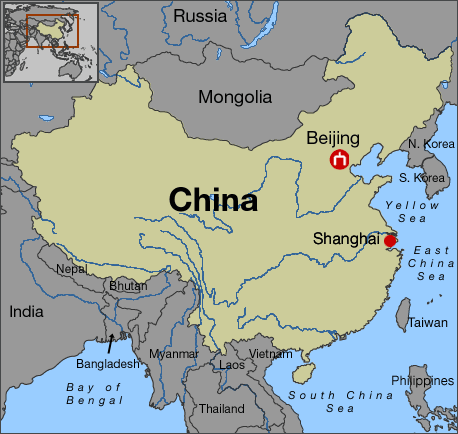
| page 1 | page 2 | page 3 | page 4 | page 5 |
| page 6 | page 7 | page 8 | page 9 | page 10 |

8th largest city in the world, where the Huangpu River flows north toward the Yangtze River
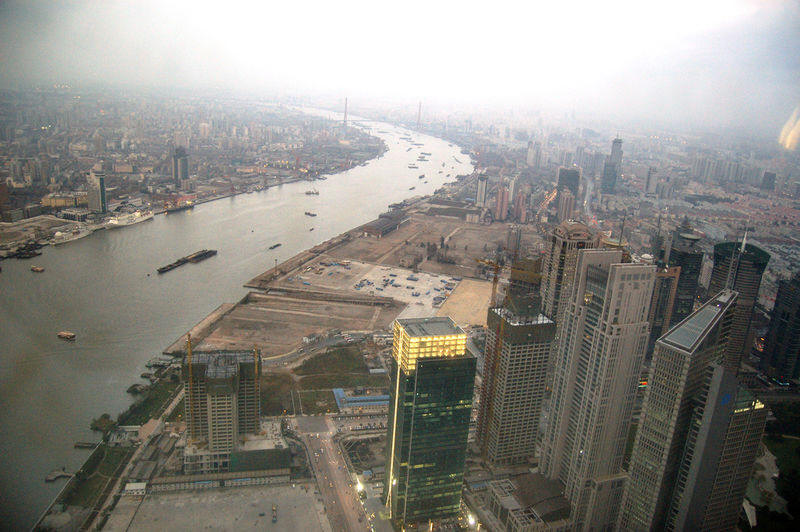
My first impression on arrival at the airport is that the people looked different from South Koreans. There faces seems to reflect a more difficult life, and their clothing was, on the whole, less properous-looking compared to the upper middle class Korean look. I also notice more people smoking than in Korea, and often the men held the cigarette between their thumb and index finger (like hippies with marijuana joints).
Our first experience was getting a taxi ride from Pudong airport into the city. Our cab driver was a woman (which we also experienced once in Seoul, Korea). However, unlike Seoul, in China, the cab driver has a protective plastic enclosure. I think this is because it is more common for one of the clients to have to sit in the front seat, and for safety, we don't want to disturb the cab driver as she or he speedily weaves back and forth across the lanes and frequently hits the brakes to barely avoid collisions.
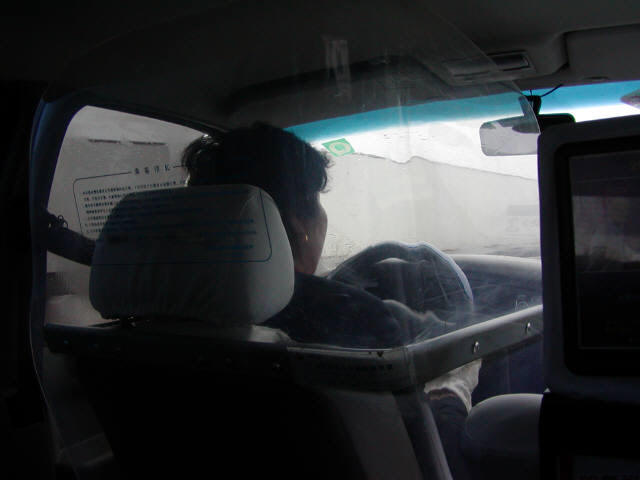
Taxi have a nice white cover in the back seat, which also means there is no way to fasten the seat belts.
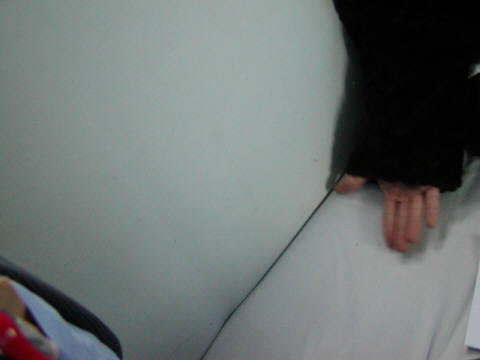
As we approached the city, we saw 2-story housing being replaced by newer 6-story housing blocks, then hyper-modern 12-story apartments (but nothing like the 40-story housing blocks of Seoul, Korea).
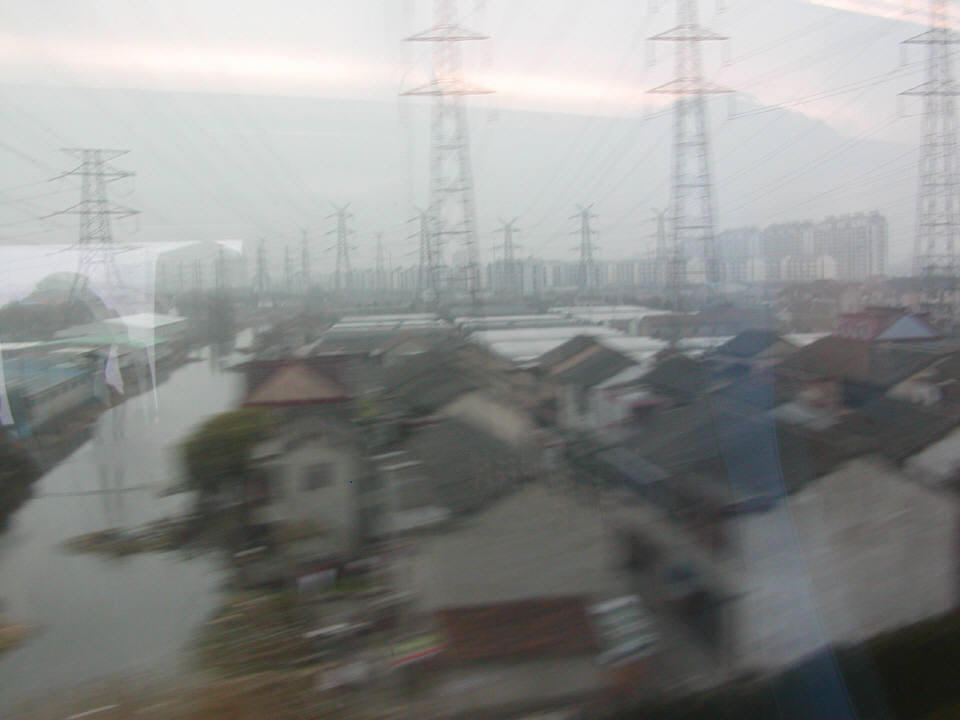
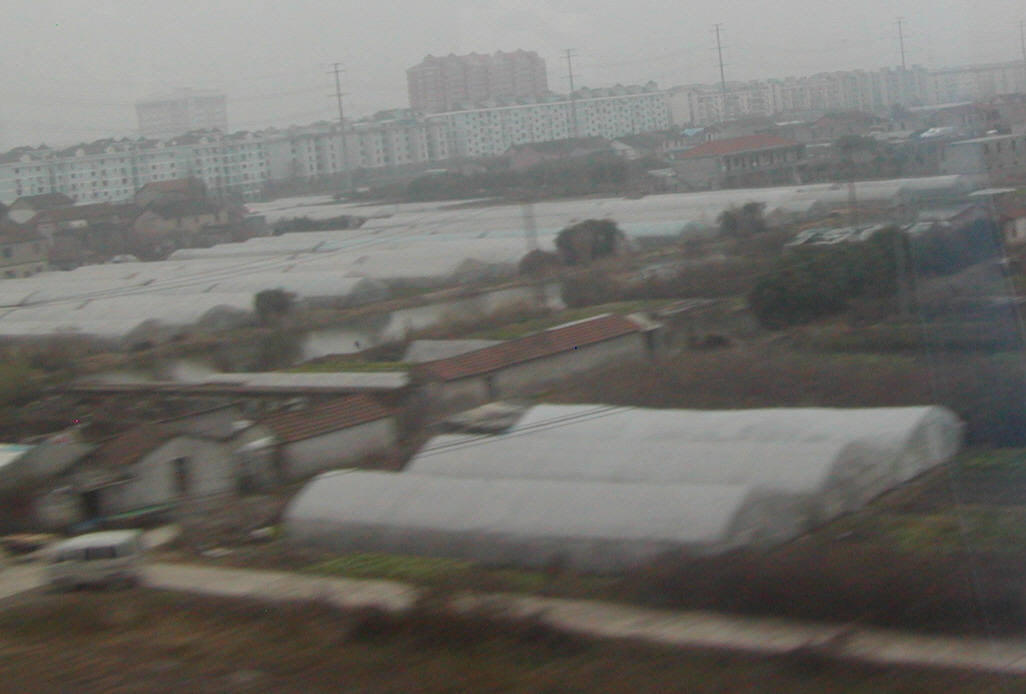
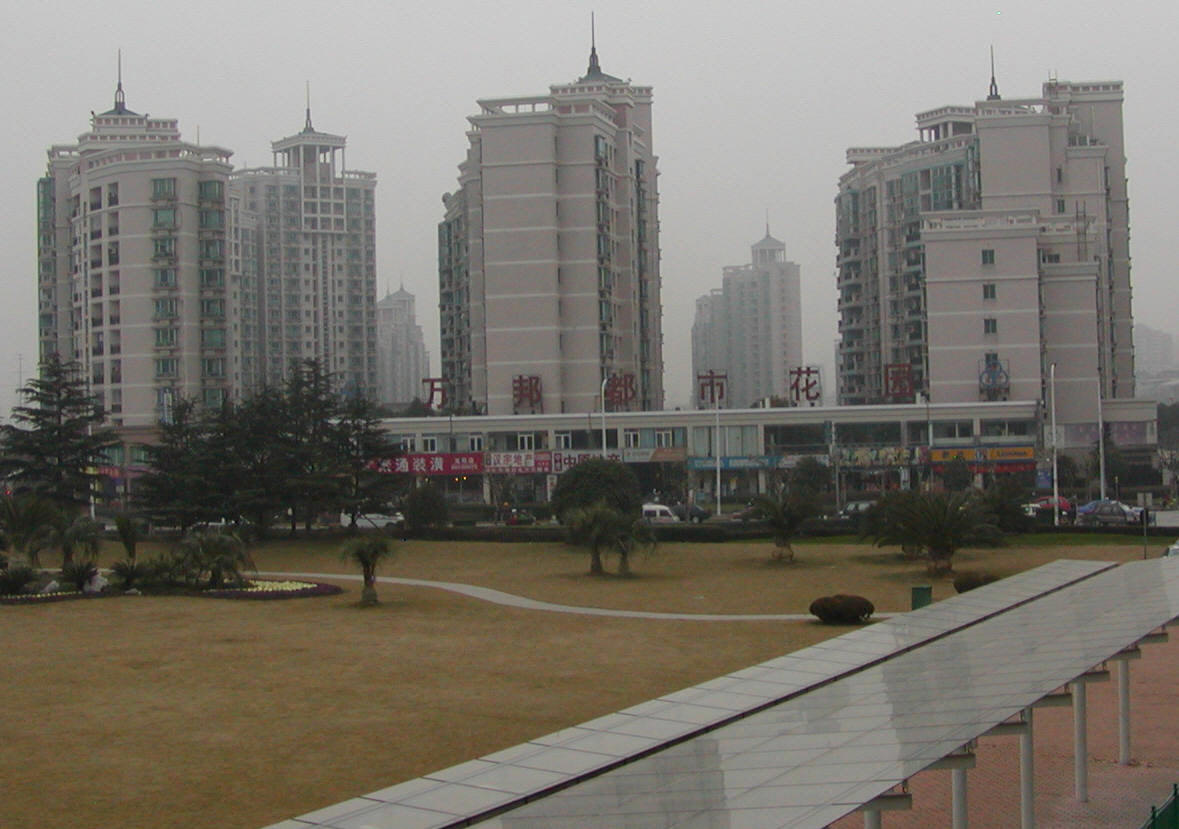
Arriving in the city. Notice the "circles" of wiring. Later, I'll have more to say about the importance of the "circle" in Asian culture.
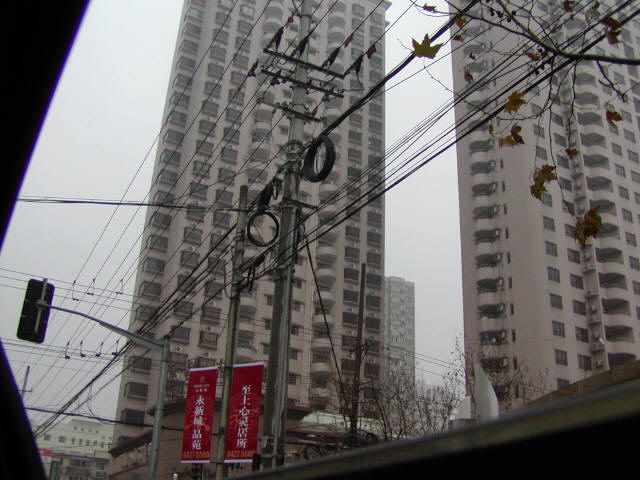
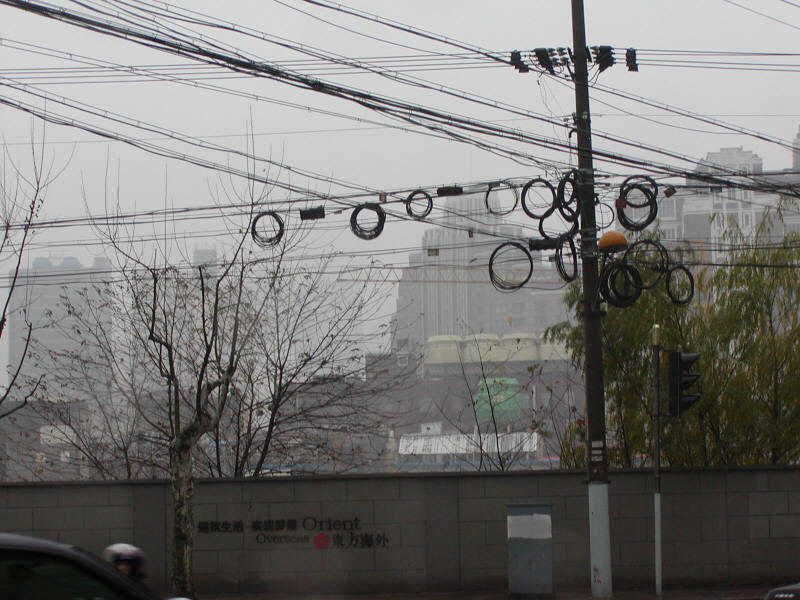
Shanghai is the most international city in China, and far
more used to Westerners than is Seoul. Every street sign and many other signs
are in both Mandarin and English.
In 1842, Great Britain won its Opium War against China, forcing the Chinese to
buy British opium that British ships brought in from British India and forcing
the Chinese to concede the best parts of the city to foreigners. Hence the
English and "American" concessions, and later the French concession.
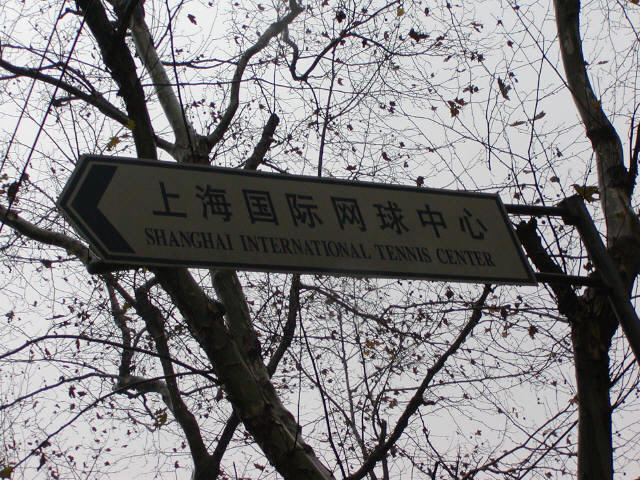
A mix of old and new in the "French Concession", the section of the city that France controlled until Japan took over in 1937.
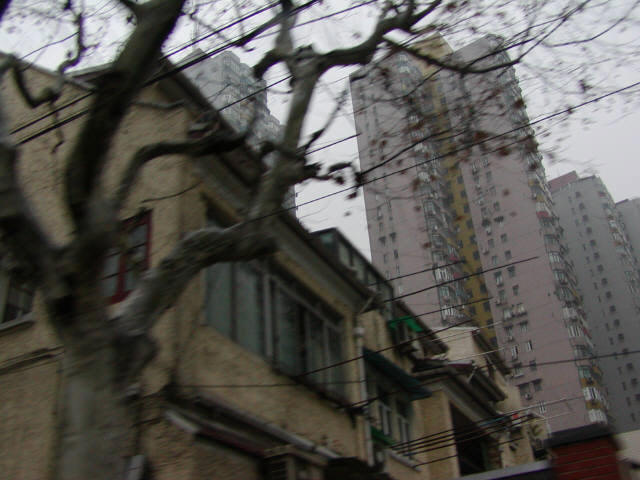
The ubiquitous Christmas tree. The "winter festival" of Christmas is extremely popular with merchants.
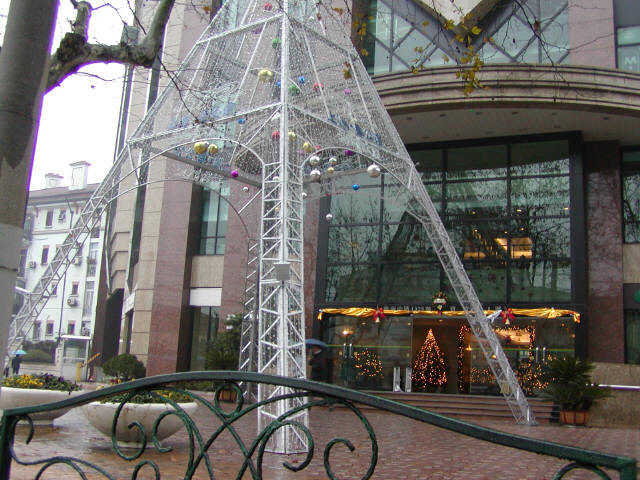
European architecture and a pagoda-shaped umbrella.
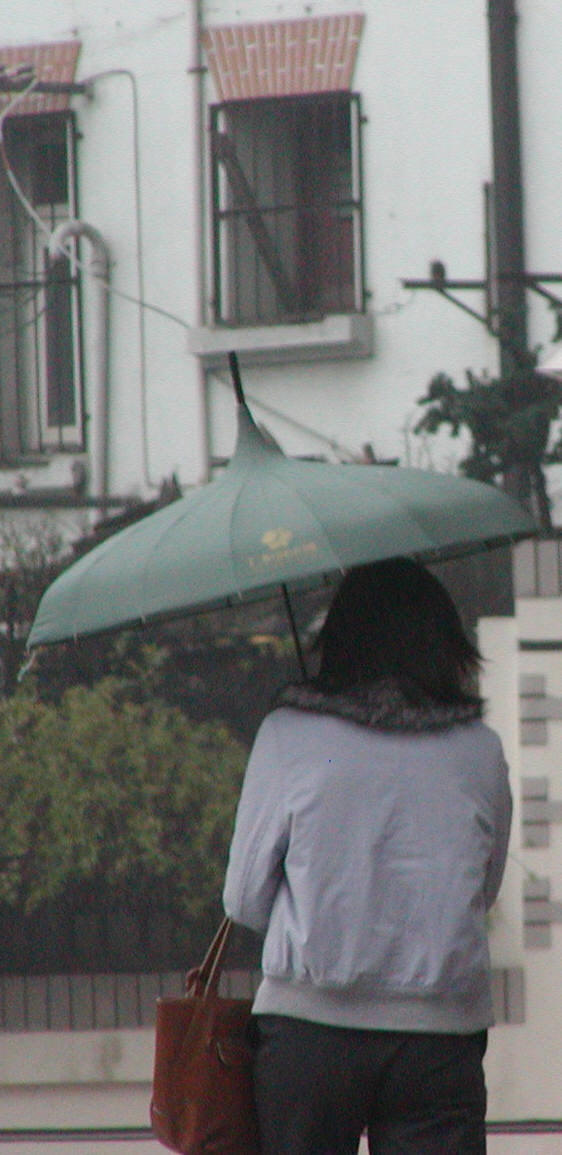
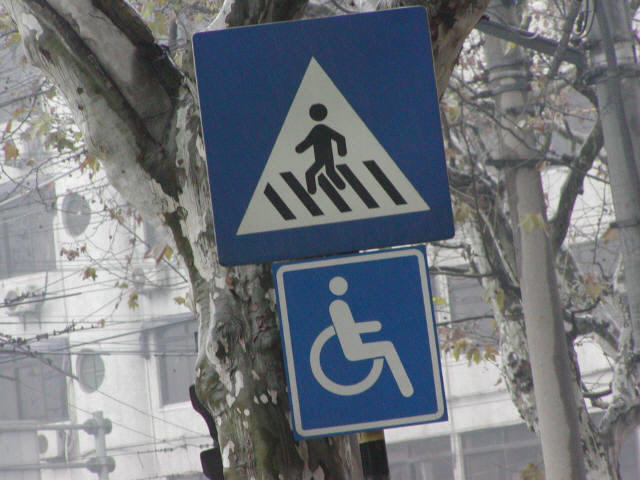
Shanghai is the New York City of China: the largest city, the most skyscrapers, the most contrast between affluence and street dwelling poverty.
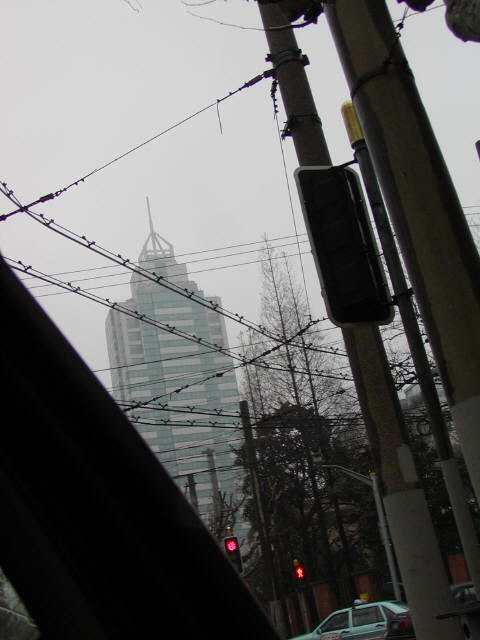
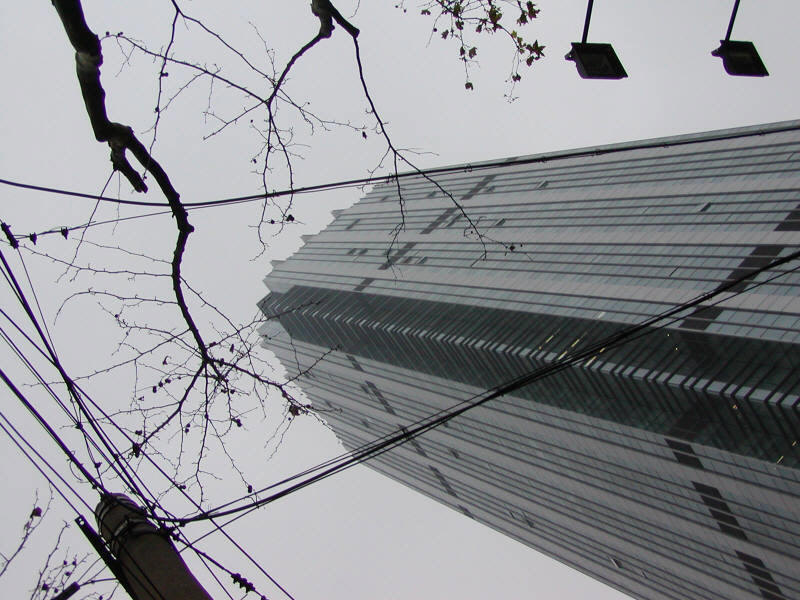
A street scavenger, hauling two bags balanced by a bamboo bar on his shoulder. This was not uncommon in Seoul about twenty years ago.
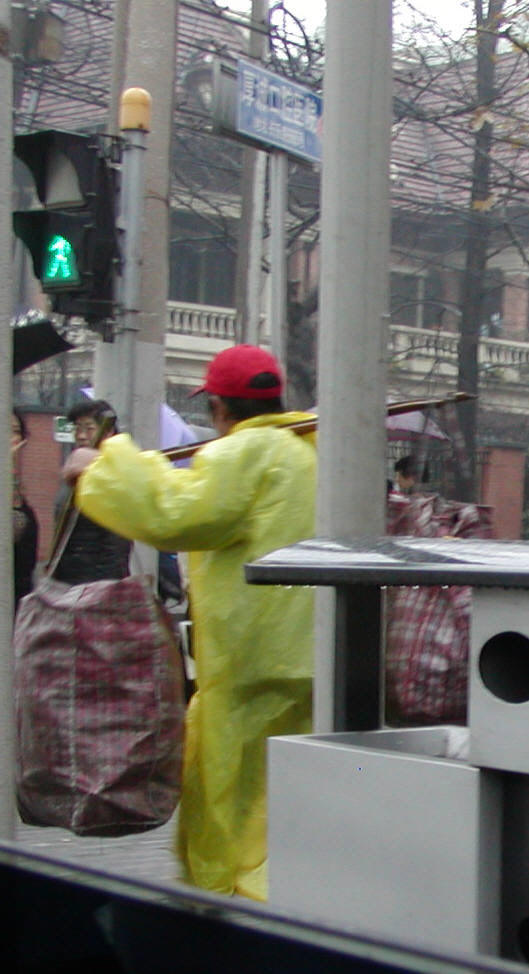
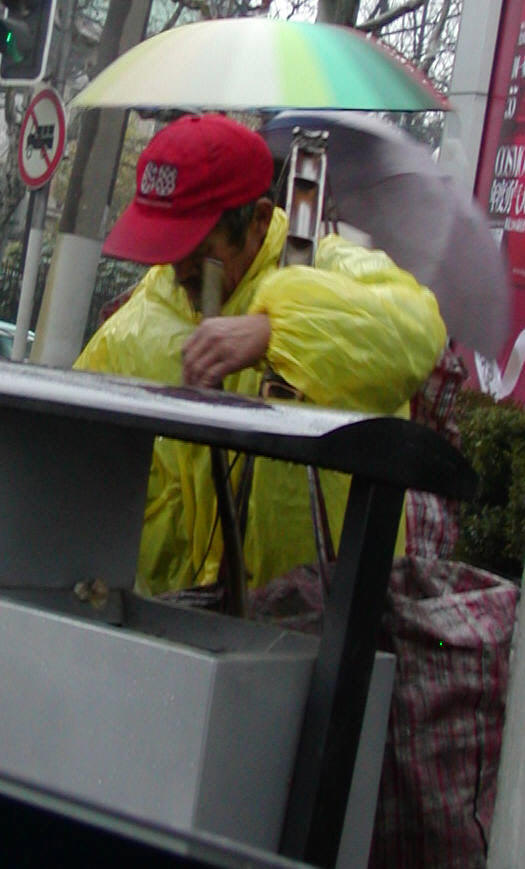
| page 1 | page 2 | page 3 | page 4 | page 5 |
| page 6 | page 7 | page 8 | page 9 | page 10 |